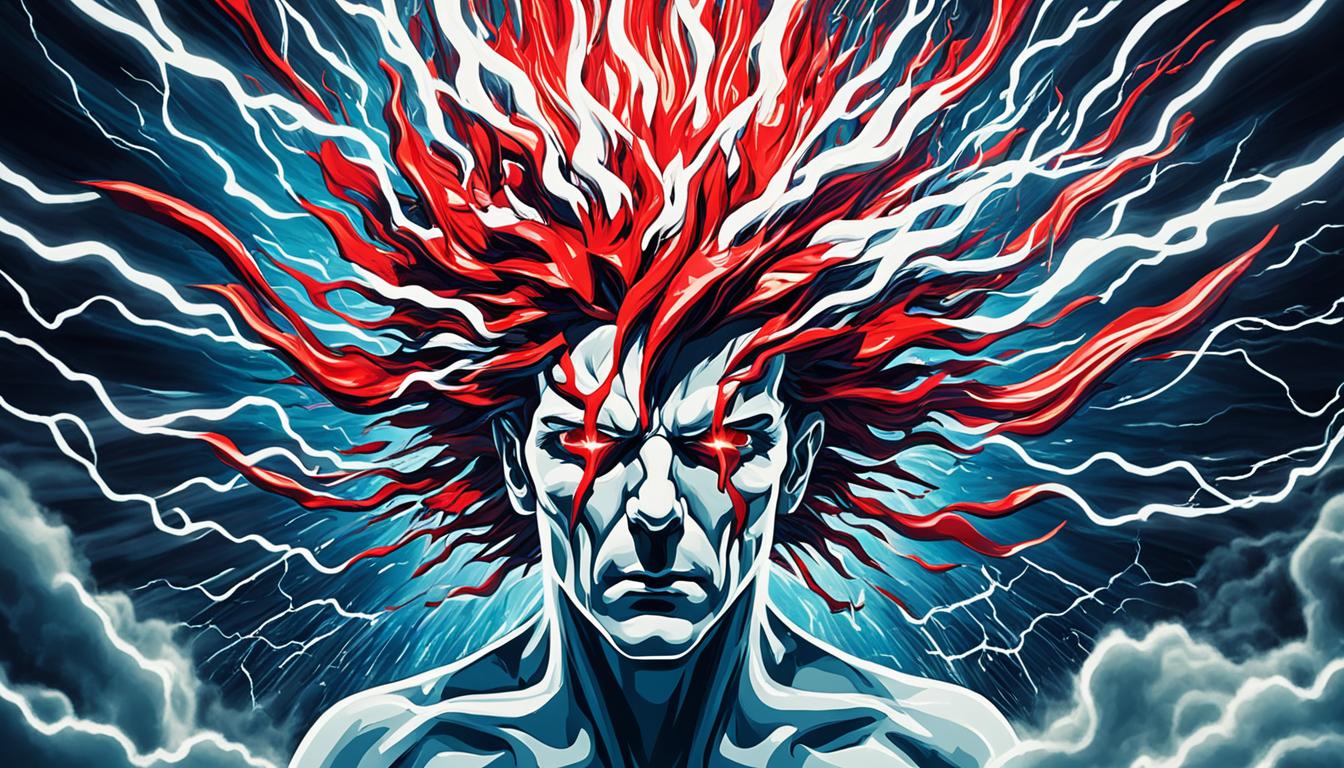Ever felt a sudden, intense headache, like a thunderclap? This headache type is very sharp and hits its max pain quickly. It’s like feeling the crash of thunder in your head.
At first, “thunderclap headache” was used for an unruptured brain aneurysm. But now we know it can come from many other health issues.
To diagnose, doctors check for everything else that could cause the headache. Many things can lead to a thunderclap headache, such as bleeding in the brain or high blood pressure. Sometimes, even everyday things like having sex or going to the bathroom can trigger it.
If you get a sudden, severe headache, seek help right away. It could be something dangerous, like brain bleeding. While not many use stem cells to treat this, always talk to a doctor for the best care.
Key Takeaways:
- Headache thunderclap is an acute and severe headache that occurs suddenly and reaches maximum intensity at onset.
- The term “thunderclap headache” was originally used to describe the pain associated with an unruptured intracranial aneurysm.
- Primary thunderclap headache is diagnosed when all other potential underlying causes have been ruled out.
- Secondary causes of thunderclap headache include subarachnoid hemorrhage, cerebral venous sinus thrombosis, and more.
- Prompt medical attention is necessary to rule out serious conditions like subarachnoid hemorrhage.
Causes of Thunderclap Headache
Thunderclap headache is sudden and very intense. It can happen for a number of reasons, some primary and some secondary. Knowing these reasons helps doctors make the right diagnosis and treat the issue well.
Primary Causes
- Primary Thunderclap Headache happens without any known cause.
- Primary Sexual Headache is triggered by sex.
- Bath-related Headache can be brought on by hot showers or baths.
- Exertional Headache comes during or after hard physical work.
Secondary Causes
There are several health issues that can lead to a secondary thunderclap headache:
| Causes | Examples |
|---|---|
| Structural Abnormalities | Subarachnoid hemorrhage, intracranial hemorrhage, intracranial dissection |
| Circulatory Disorders | Venous and arterial thromboembolism, stroke, reversible cerebral vasoconstriction syndrome |
| Systemic Conditions | Hypertensive encephalopathy, vasculitis, alterations in cerebrospinal fluid |
| Other Causes | Pituitary apoplexy, cervical spine instability |
Cervical spine instability can cause thunderclap headache too. Knowing if the neck is unstable is important in check-ups.
To diagnose a thunderclap headache, the doctor looks at all possible causes. They check the symptoms, health history, and might do imaging tests.
Diagnosis and Management of Thunderclap Headache
To find out what’s causing a thunderclap headache, doctors do a lot. They take a detailed medical history, do a physical exam, and check your nervous system. These steps are very important. They help figure out the main issue and how to treat it right.
Imaging tests like CT scans or MRIs are key in diagnosing. They are used to look for serious problems, such as bleeding in the brain or other issues. Seeing the brain’s structure helps doctors pick the best treatment options.
For some patients, a spinal tap might be needed. This test checks the fluid around your brain and spinal cord for blood or other issues. It can give doctors a clear look at what’s wrong and how to treat it.
How to treat a thunderclap headache depends on its cause. Pain medicines can help. Treating any other health issues is also important to stop the headaches from coming back.
Changing your lifestyle can also help manage these headaches. This includes reducing stress, staying active, and eating well. These habits can lessen how often you get the headaches and make you feel better in general.
But, if less extreme methods don’t work, surgery might be an option. Always work closely with your doctor to pick the best plan for you. Every person’s situation is different, so the treatment needs to fit your specific case.
Thunderclap Headache Diagnosis and Management Overview:
| Diagnosis | Management |
|---|---|
| Thorough medical history | Medications for pain relief |
| Physical examination | Management of underlying conditions |
| Neurological evaluation | Lifestyle modifications |
| Imaging tests (CT scan or MRI) | Surgical options, if necessary |
| Lumbar puncture |
Every thunderclap headache case is different. Your treatment plan should be just for you. Seeing a doctor who knows a lot about headaches is really important. They will make sure you get the right diagnosis and treatment.
Conclusion
Thunderclap headache is a severe headache that starts suddenly. It needs fast medical help. Getting the right diagnosis is key. This tells doctors how to manage it.
Treatments can change based on the cause. This might include pain medicines, lifestyle changes, and maybe surgery. It’s vital to work with a doctor. They will create a plan that fits your needs.
If you have a sudden, strong headache, see a doctor right away. Don’t think it’s not serious. Getting quick help is important for your health. It can also prevent any big issues later. So, act fast to get better and enjoy life more.

